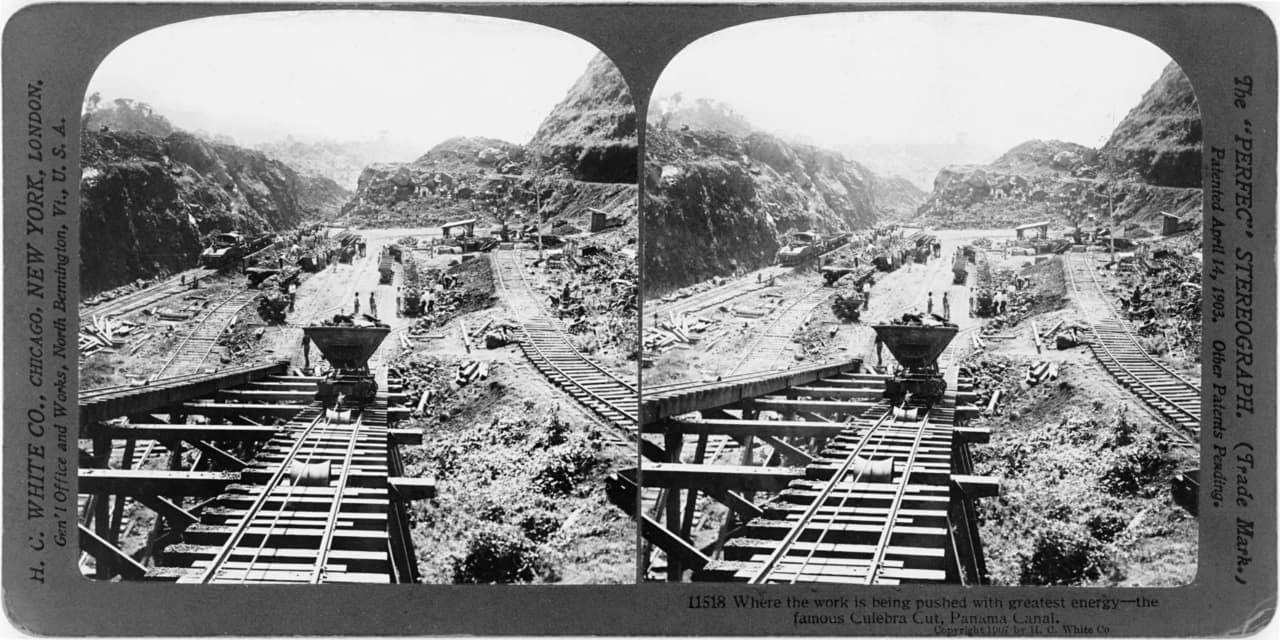Masterpiece of engineering, construction site from hell, cradle of a country, blessing for world trade — but also an increasingly endangered bottleneck and gateway for faunal pollution and invasive species: the Panama Canal also has “two sides” in a figurative sense.
Masterpiece and construction site from hell
The first attempt failed: builder Lesseps, who had successfully mastered the Suez Canal, considered the Panama Canal to be similarly “easy” to build. But this was not a flat desert, instead the route was through mountainous terrain overgrown with dense jungle. The effort as well as accidents, malaria and other diseases killed the workers. According to the “accounts” of the time, 22,000 people are said to have died during construction – but only “white” victims were counted. The actual death toll is therefore likely to be far higher.
It also became clear that building a canal on a continuous level was completely impossible. When Lesseps finally redesigned and planned locks, failure could no longer be averted: by 1888, the canal construction company was bankrupt (which led to one of the biggest financial scandals)!
In 1902, the successful “2nd round” began after the USA bought up the project, including the parts already built, for a mere 40 million US dollars. President Theodore Roosevelt had been persuaded to complete the stalled project. The driving force behind this was primarily military-strategic considerations: It was and is an immeasurable advantage for the US navy to be able to move ships quickly from the Atlantic to the Pacific side and vice versa if necessary.
In order to make better progress, the USA claimed the canal area from Colombia and eventually occupied it without further ado. They simply founded a new, independent country around the planned course of the canal: Panama was born!
At the second attempt, the conditions for the workers were improved and the construction finally succeeded — in 1914 a ship passed through the new canal for the first time.
A blessing for global trade
Since those days, world trade has exploded in the wake of globalization. Today, the importance of the canal for international shipping is so great that old plans for a second canal are repeatedly taken out of the drawers and discussed anew. But so far, these plans have failed – from an ecological point of view, it must be said: Fortunately!
Because ecologically speaking, the Panama Canal is less of a blessing. Especially since its expansion in 2016.
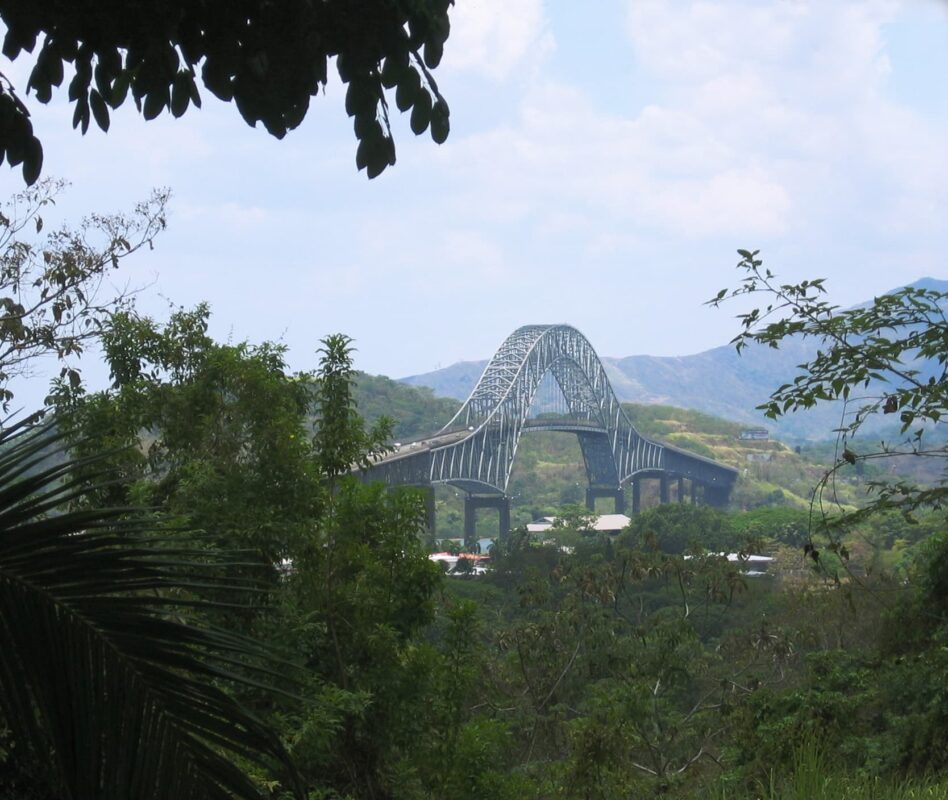
Freshwater lake as an “insurmountable” barrier for saltwater species?
In principle, the Panama Canal is very ingeniously designed: By damming a centrally located river, a large freshwater reservoir — Lake Gatún — was created, from which freshwater flows into the canal in both directions. Ships pass through this lake during their passage. This was intended to kill off species dependent on salt water and thus prevent them from spreading.
Unfortunately, this does not work quite as reliably as expected: even before the last expansion of the canal, various species were spread — from mussels (which can simply “shut down” during the freshwater passage) to fish. And their parasites and pathogens can also migrate with the animals, often encountering new hosts at their destination whose immune systems are completely unprepared for the previously unknown parasites. Just as the ecosystems as a whole are often more or less “defenceless” against newly arriving species, at least initially.
After all, ecosystems are “evolved systems”; they develop through the long-term interaction and joint evolution of the species they contain. If a species is added “from now on”, ecosystems often react extremely sensitively.
And so the migration of species via the Panama Canal is also leading to more and more problems in the affected parts of the sea.
Expansion with “water recycling” exacerbates the problem
Speaking of evolution: merchant ships have also “evolved”, and today’s ships are no longer comparable in size to those of the past. The Panama Canal was therefore expanded in 2016. And the new locks were equipped with a “water recycling” system: Whereas previously the lock water was simply let out, there are now large reservoir basins in which the water is held and recycled for further lock operations; the lock water circulates.
As a result, it will be easier for migratory species to cross the locks.
In addition, Lake Gatún is becoming increasingly salty. However, the saltier it becomes, the easier it can be colonized and overcome by saltwater species. The “barrier” becomes more permeable…
Climate change is also involved
And finally, climate change is also involved: As described, the Panama Canal works on the principle of water inflow. But what if the water inflow is reduced? If there is no rain more and more often?
There was a period of drought this year , which resulted in around 50 % less rainfall than usual in spring. As a result, the maximum load of ships passing through had to be limited because the remaining depth of the canal was no longer sufficient for fully loaded ships.
Protected rainforest with fascinating wildlife
Fortunately, Panama has dense rainforests flanking the canal. They are filled with unique wildlife. There are enchanting frogs here, some with huge red eyes like the red-eyed tree frog(Agalychnis callidryas) or glass frogs, whose undersides are so transparent that you can see all their organs through them. They lay their eggs on the underside of plants that stand above bodies of water. Here the offspring are protected from predators that live in the water – but are a popular snack for wasps and snakes. Fascinating: If a snake or wasp approaches a clutch and begins to feed on it, the remaining embryos activate an “emergency hatch”: If the clutch is at least four days old, the embryos hatch and fall into the water — where they are out of reach of the snake or wasp.
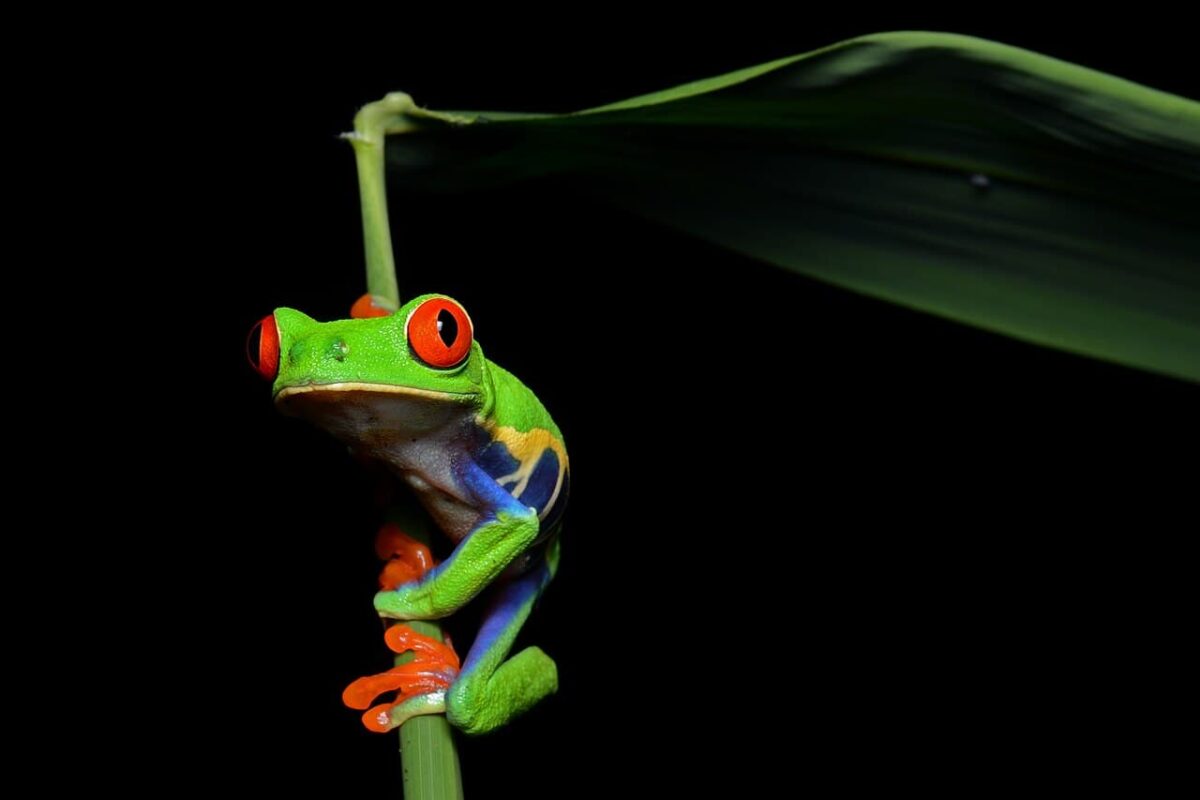
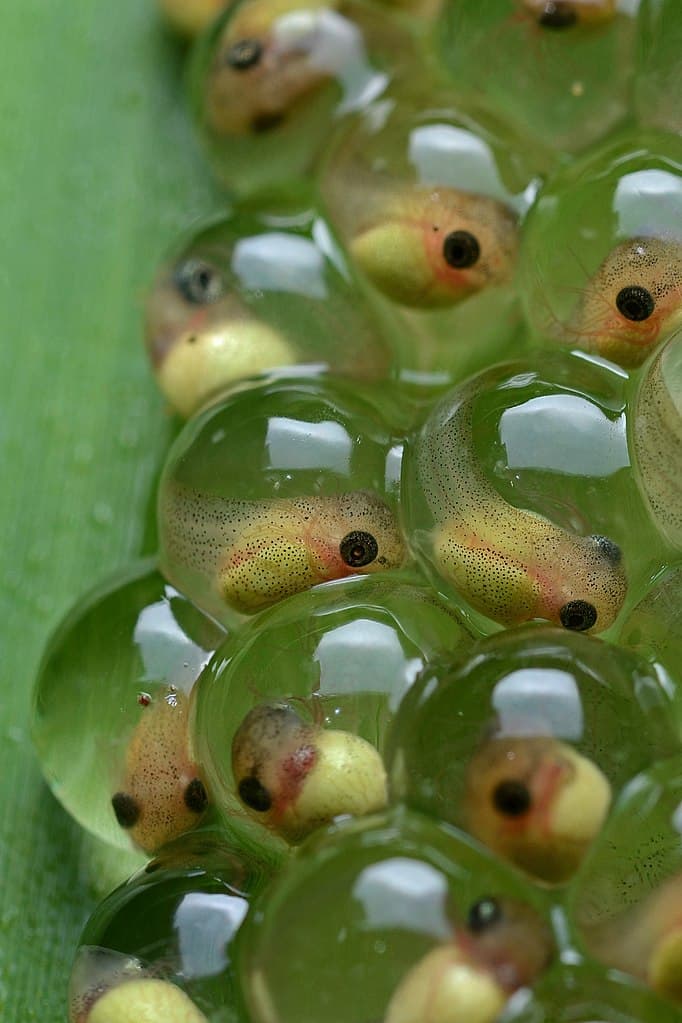

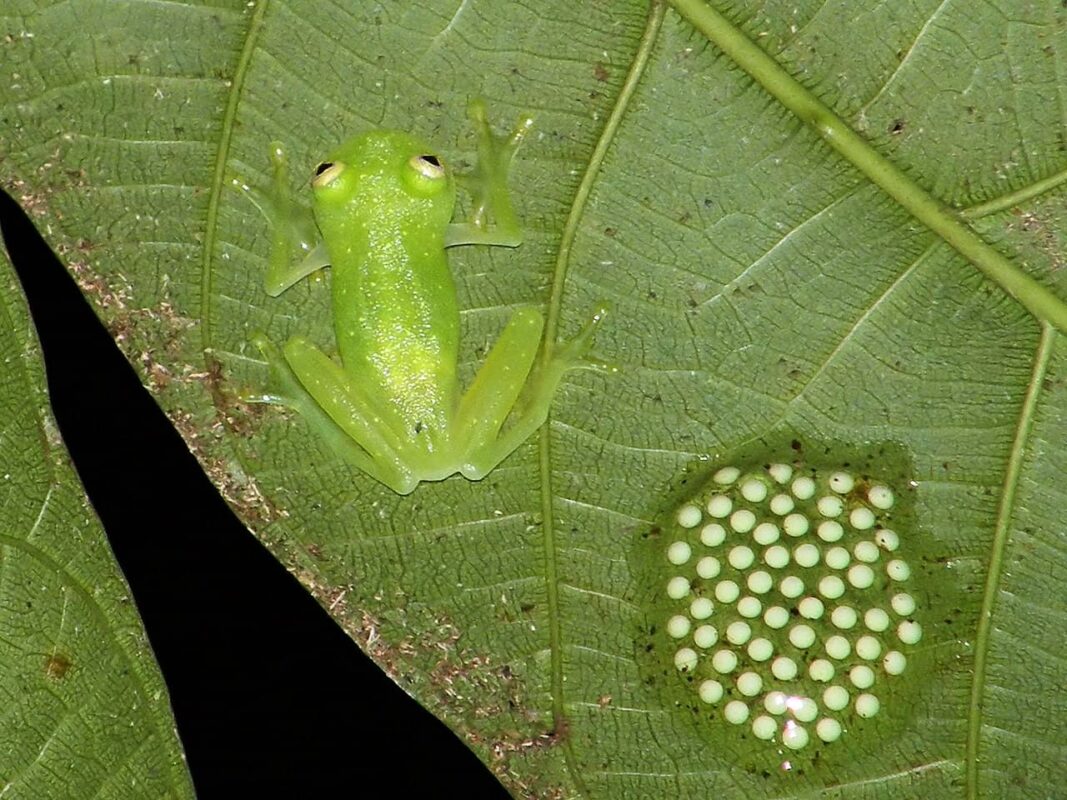
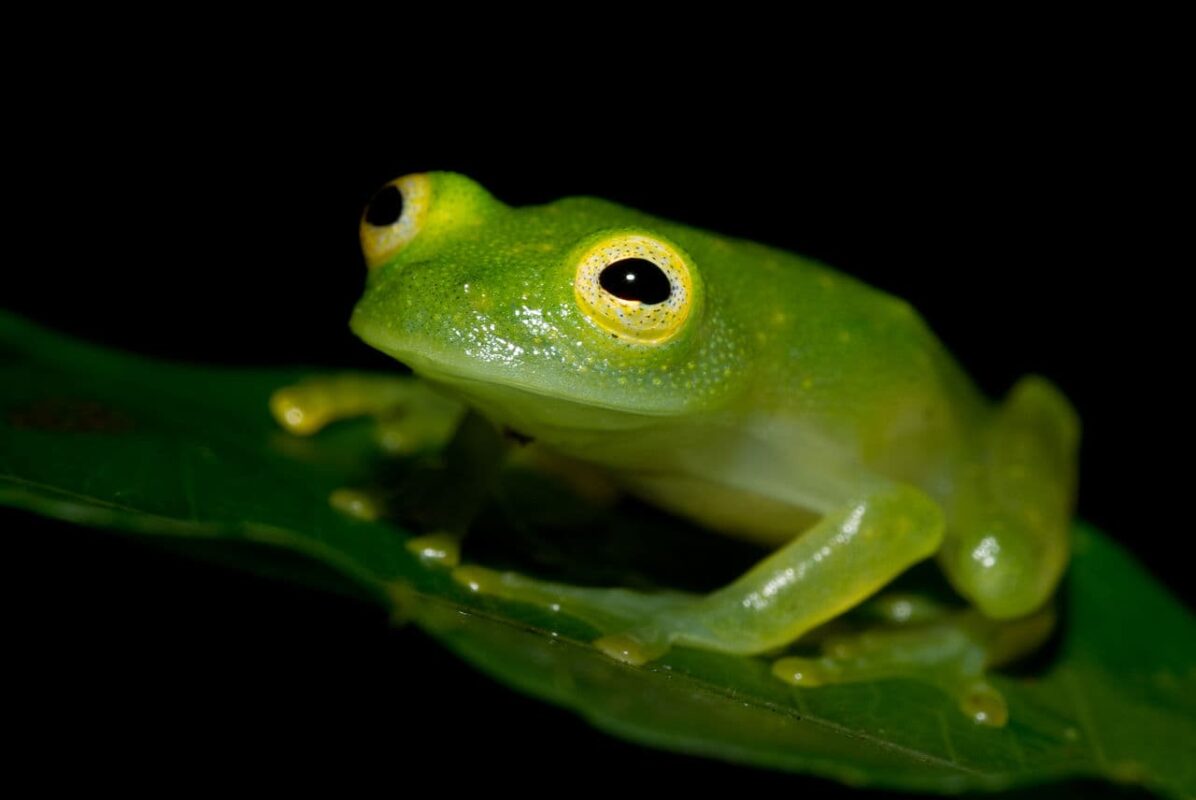
These unique habitats around the famous canal, through which huge ships constantly pass — over 14,000 in 2022! –are not only worth protecting because of their unique flora and fauna. Rather, the same primeval forests that were hell for the workers 140 years ago now also protect the banks of the canal that runs through them from erosion and, above all, (still) secure the water supply:
The water supply depends on the forests. We at the Smithsonian Tropical Institute have recently backed up this effect with data. Now we can calculate exactly how much water a forest absorbs and makes available again to the surrounding area and pastureland during the dry season. We now know the extent to which forests can reduce storm-related flooding. There is no one in Panama who has not long since realized how much the fate of the Panama Canal depends on functioning forests.
Steve Paton
In Panama, people know how vital the forests are and are doing a lot to protect them. And yet everything here is fragile. In addition to the increasing droughts with corresponding problems in the middle of the canal, new problems are already emerging on the estuary side with the ongoing rise in sea levels…

